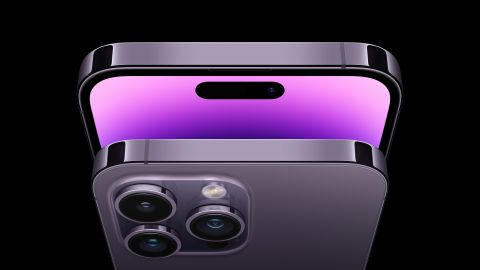Reasons why you shouldn't buy the new iPhone 14.
Things to know before getting your hands on the new iPhone 14
Are you still confused about investing your hard-earned money in the latest Apple products iPhone 14, iPhone 14 Pro, and iPhone 14 Pro Max? Then we're here to help you; stick with us through the end to find out how.
No notch
The company removed the notch cutout from the iPhone in 2022. Instead of a hole punch cutout, Apple has used a pill-shaped "pill hole" design. The change has expected to start with the high-end iPhone 14 Pro.
No Touch ID
Apple was reportedly forced to delay the under-display Touch ID to 2023. Apple has faced "lower than expected development progress" in its work to integrate Touch ID. Apple integrated Touch ID into the iPhone's power button, similar to iPad Air and iPad mini.
Camera bump stays
iPhone 14 Pro and iPhone 14 Pro Max have bigger camera bumps than their predecessors. The main reason for this is upgrading the wide camera to 48MP (vs. 13 Pro/Pro Max's 12MP). The diagonal length of 48MP CIS has increased by 25-35% and the height of the 7P lens by 5-10%.
Small iPhone
The iPhone 14 range of iPhones is on sale from September 16 onwards. The iPhone Mini was first seen on the iPhone 12 series and was designed for smaller hands. If you're a small phone fan, you're better off with the iPhone 13 Mini or the $429 iPhone SE.
No physical SIM card
The iPhone 14 series marks the first time that the iPhone has ditched the physical SIM card for an eSIM. The eSIM allows you to activate and transfer cell plans digitally. It could become a headache for frequent travelers who swap out SIM cards when going abroad.
You’re in love with iPhone 13
The base iPhone 14 has the same processor as the iPhone 13 range. If you bought an iPhone 13 last year, you'll be in good shape for another few years. The iPhone 13 Pro's key features include a durable Ceramic Shield display and 5G support.
conclusion
The modifications made here are not worthwhile. But let's get more specific. The iPhone 14 features the same design as Apple's primary phone line from the previous two years, the same cameras (except a wider aperture on the main camera and selfie camera, similar to the iPhone 13 Pro), the same display, and a slight improvement to the current A15 Bionic processor. These components work together to create a robust phone. iPhones make excellent smartphones almost often, but that isn't the point I'm trying to make here. My case is centered on anticipating the future and, more specifically, anticipating what the iPhone 14 Pro would offer.
With its improved cameras, revised design (particularly, the removal of the notch and replacement with a fascinating Dynamic Island integration), the A16 Bionic chip, and that better display refresh rate, the new iPhone XS has a lot going for it. But as we've seen with prior improvements, certain Pro phone additions eventually make their way to normal phones. For instance, the iPhone 13's Sensor-Shift optical image stabilization originally debuted on the iPhone 12 Pro Max.
In light of this, I'm reasonably convinced that the iPhone 15 will contain an updated design language as well as some additional functionality, such as a 120Hz refresh rate display. Some may argue that most consumers don't care about that, however when you consider how many less expensive Android phones benefit from it.




